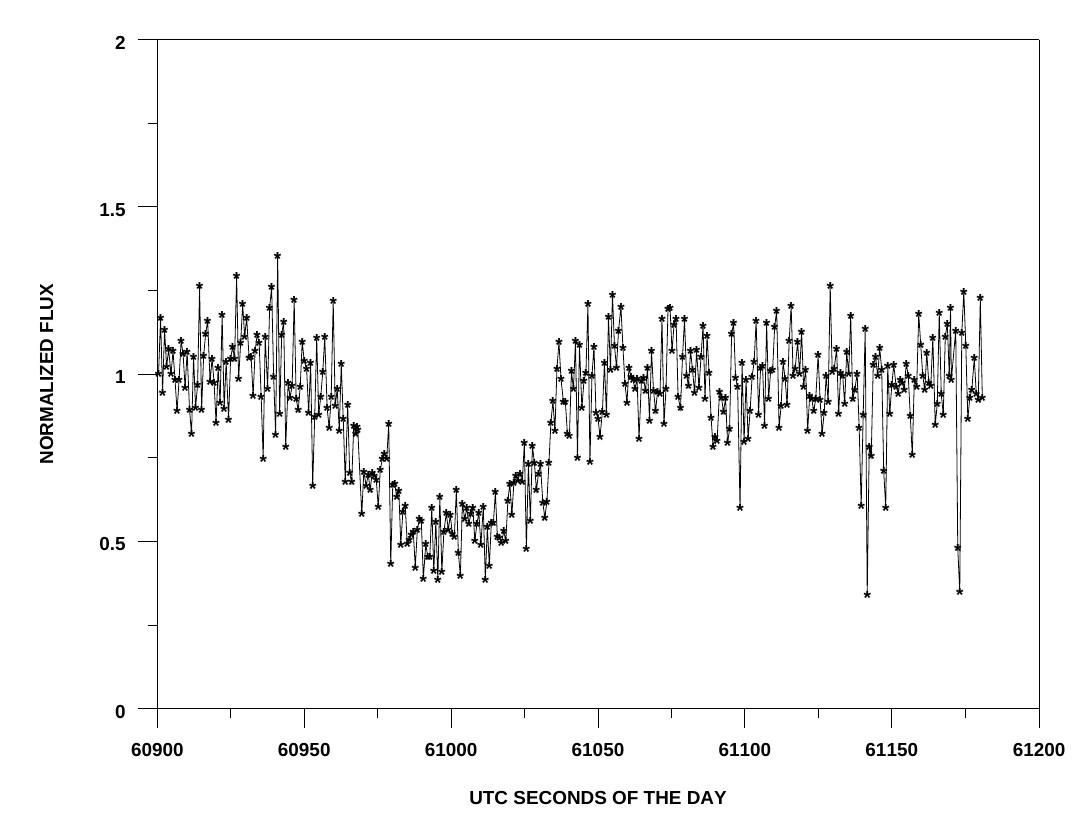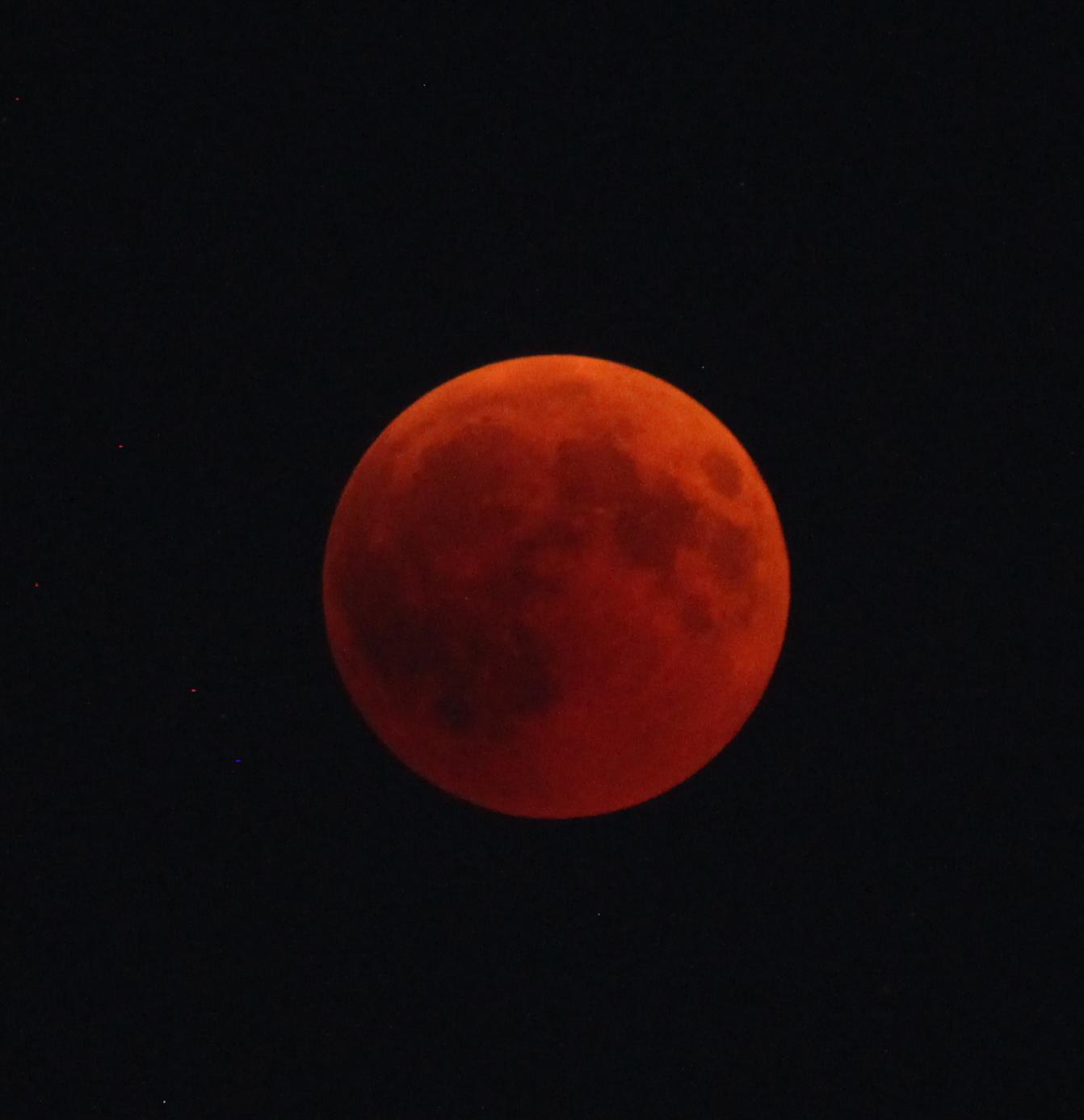2021 and Older
Call for Observations
2005UQ513 occults UCAC4 622-002689 (Gmag 9.4)) on 2021 November 28 in Europe, predicted by the Lucky Star Team.
In the early evening of November 28th 2021 around 17h59min UTC 2005UQ513 will occult UCAC4 622-002689 (9.4 Gmag). a map from the LuckyStar project you can see below. Good luck!

Observation fo the Occultation of UCAC4 336-196144 by Pluto
Only about 13 degree of elevation in Munich, but excellent weather conditions allowed the observation of the occultation of UCAC4 336-196144 (Vmag 13m1) by Pluto
with an 11 inch instrument and 700 msec exposure time.

Call for Observations
Pluto Occults UCAC4 336-196144 on 2021 November 19 in Europe, predicted by the Lucky Star Team.
In the early evening of November 19th Pluto will occult UCAC4 336-196144 (13.1 G-mag) in the constellation Sagittarius.
The southern part of the path will cross central Europe from the West to the East just after dusk.
Call for Observations
Transatlantic Occultation by TNO (84522) 2002 TC302 in Europe and North America
The minor planet (84522) 2002 TC302 will occult the star UCAC4 616-007599 on 2021 Nov 2011 around 2h54min UTC. The star has the Vmag of 11m7. This is event is easy to observe even with smaller instruments!
Call for Observations
Stellar Occultation of Regulus by Asteroid (2589) Daniel on 2021 Mar 09
Asteroid (2589) Daniel (16.9 mag) will occult 1.3 mag bright star Regulus on 2021 March 09.
Urgent Call for Observations
(99942) Apophis Occults UCAC4 436-049782 (9m3)
(99942) Apophis is a Near Earth Object, which is on a high priority list because ot close encounters with the earth.
On the 7th and 11th of March occultations with bright stars will happen in Europe and in the USA.
Call for Observations
Occultation by Triple System (45) Eugenia across Europe, 2021 Feb 25
Asteroid (45) Eugenia (13.4 mag) and its satellites Petit-Prince and S/2004 (45) 1
will occult an 11.6 mag star around 18:04 UT on 2021 February 25.
Call for Observations
Neglected Asteroids / Slow Rotators
A special observations campaign is organized by Anna Marciniak for
neglected asteroids. These are small bodies of the main belt with slow rotation and small lightcurve amplitudes, avoided by most of previous studies.
Call for Observations
Occultation by (2) Pallas across Europe, 2020 June 22
Asteroid (2) Pallas (9.6 mag) will occult an 11.5 mag star around 23:06 UT on 2020 June 22. The European continent is located inside the path.
Call for Observations
Moon occults Venus on June 19th, 2020 around 8h UTC
Moon occults Venus on the 19th of June 2020 in the morning. For Berlin its around 8h UTC. The situation for Berlin is shown in this graphic visualization using "Carte du Ciel" planetarium software.

An overview of the occultation and a special call for observation from Costantino Sigismondi!
A Workshop about using the QHY174 GPS Camera in Berlin
A workshop about the use of the QHY174GPS camera was held on the 29th of February 2020 in Berlin/Germany at the Archenhold Observatory. It addresses the use of the camera system with GPS timing
inserts from the beginning.
Call for Observations
Occultations by (87) Sylvia and its Satellites Romulus and Remus on 2020 Feb 10
In October 2019 an occultation by the triple system of asteroid and its two moons was successfully observed in Europe. Now there is another opportunity to learn more about (87) Sylvia and its
satellites. But the targest star is much fainter, so large apertures are needed for detections of occultations by Romulus and Remus.
Call for Observations
(4) Vesta occults 5.3 mag star on 2020 Feb 11 in Europe
In the late evening of February 11 around 22:01 UT the minor planet (4) Vesta will occult HIP 14439 (5.3 Vmag) for a maximum duration of 28 seconds with a drop in magnitude of 3.0 mag and an
approximate projected width of 522 km. UK, Ireland, Norway, Denmark, Germany, Sweden and Poland and the the Baltic states are inside the path. In the eastern European countries the target star will be
very low in the western sky.
Tutorial about Using Occult for (Total) Lunar Occultations by Dave Gault and Dave Herald
A new tutorial with the title " Tutorial - Using Occult for (Total) Lunar Occultation prediction, reporting and analysis." by Dave Gault and Dave Herald has been added to our guideline section.
Call for Observations
(34339) 2000 QH218 Occults Naked-Eye-Star on 2019 February 05 in Europe
In the late evening of February 5th, the 11-km minor planet (34339) 2000 QH218 will occult HIP 48455 (3.4 Vmag). Observers in the occultation path will see a disapperance of 1.4 sec.
Total Lunar Eclipse ... Shortly before Centrality
One of the most prominent examples of occultations is a lunar eclipse. The longest lunar eclipse of this century takes place just now! The image with a conventional DSLR camera has been taken from
Munich. Copyright W. Beisker, IOTA-ES (2018)
Successful observation of the occultation by Himalia of 10m5 star!
Observed from stations in Poland and Ukraine.
Positive chords from the Himalia event are to be reported. Two with the double system Max and Moritz operated by Anna Marciniak (Moritz)) in Poznan and 100km away the other by Eberhard Bredner near
Konin (with Max) and a third, very short occultation (~2 sec) observed by Roman Hirsch (Astronomical Observatory Institute) in Borowiec. Also positive observtions in the Ukraine. More news will
follow!
Call for Observations
Himalia (J-6) Satellite of Jupiter Occults Bright Star (20th of May 2018)!
Himalia, an irregulate satellite of Jupiter will occult a 10mag star on the 20th of May 2018 around 22h 16min UTC for northern and eastern Europe. The occultation track has moved about 180 km north!
Call for Observations
Occultation by minor planet (130) Elektra successfully observed in Europe
Over 30 stations participated in the most successful observation of an occultation by (130) Elektra ever.
Never before has the shadow profile of minor planet (130) Elektra been so accurately measured. More than 30 observers from Italy, Switzerland, France, Belgium and Great Britain measured the
occultation around 00:30 U.T. on April 21, 2018.
GRAZPREP-software for 2018
Find and prepare grazing occultations in detail
Grazing Occultations of stars by the moon are local events and thus require an individual selection according to personal observation preferences. The GRAZPREP-software assists in all aspects of
finding individually interesting events as well as selecting the best observing stations promising the most contacts between the star and the lunar limb in high resolution. GRAZPREP can be downloaded
and installed, including a step by step operation tutorial.
Call for Observations
2002TC302 Occults UCAC4-593-005847 (15m8) for Europe. New astrometric update!
On 28th of January 2018, around 21h55min UTC, the TNO 2002TC302 occults a 15m8 star. This is a relatively easy to observe event, because of the low speed of the TNO relative to the star of only about
5km/sec. Give it a try! Even instruments with less than 30 cm diameter should do it. And you don't need a high speed camera for this slow event. With 1 or 2 seconds exposure time you can do valuable
science! A new update of the prediction has been issued by J. Desmars.
Haumea, the most peculiar of Pluto companions, has a ring!
From a press release of the Instituto de Astrofisica de Andalucia (IAA-CSIC)
The trans-neptunian belt contains four dwarf planets, among which Haumea stands out for its extremely elongated shape and rapid rotation.
A stellar occultation revealed the main physical characteristics of this heretofore poorly known body – among which the most surprising presence of a ring.
Researchers around Jose-Luis Ortiz and Pablo Santos-Sanz published a paper in Nature, that showed a ring around Haumea. This is the first trans-Neptunian object with a ring.
"One of the most interesting and unexpected findings was the discovery of a ring around Haumea. Until a few years ago we only knew of the existence of rings around the giant planets; then, recently,
our team discovered that two small bodies situated between Jupiter and Neptune, belonging to a group called centaurs, have dense rings around them, which came as a big surprise. Now we have discovered
that bodies even farther away than the centaurs, bigger and with very different general characteristics, can also have rings,” says Pablo Santos-Sanz, a member of the IAA-CSIC team. Also members of
IOTA-ES, professionals and amateurs as well, contributed to this research. It has been published by
J. L. Ortiz et al. "The size, shape, density and ring of the dwarf planet Haumea from a stellar occultation". Nature, (2017) DOI: 10.1038/nature24051




